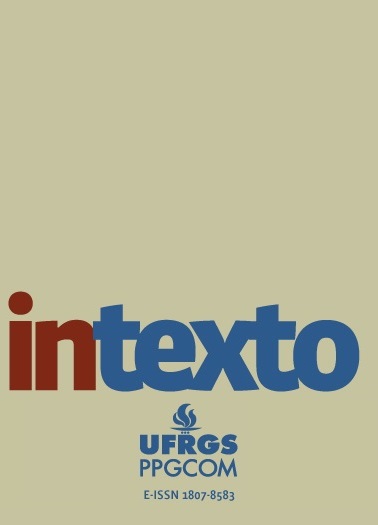She is the Doctor Who
women, witches and scientists in The Witchfinders episode
DOI:
https://doi.org/10.19132/1807-8583.56.134652Keywords:
female representation, gender relations, women, Doctor Who, BBCAbstract
This article analyzes the representation of the first female protagonist in the Doctor Who series within the context of witch hunts, as depicted in the episode "The Witchfinders". Over its more than 50-year history, the series has been characterized by its longevity and the portrayal of various male actors in the lead role. However, in 2017, the first female Doctor was announced. This study aims to explore the significance of this change by introducing the first female lead character in a historical episode with a backdrop of witch hunts. The gender relations portrayed in "The Witchfinders" highlight the series' commitment to presenting the stories of both women and history. Through film analysis grounded in Cultural and Gender Studies, shifts in female representations are observed, leading to enhanced representativeness. Despite these advancements, the raised discussions and the outcome of the plot diverge from the main theme, as the character ends up being marginalized and, to some extent, subjugated in relation to male dominance. We reflect on the parallel treatment of witches and women as mythical and misunderstood beings, whose histories have been erased, akin to the alien entities in the episode. Therefore, despite some ruptures, the series misses the opportunity to delve deeper into the portrayal of the Doctor as a woman in a narrative centered on female oppression.
Downloads
References
ANDRADE, Paula Deporte de; COSTA, Marisa Vorraber. Nos rastros do conceito de pedagogias culturais: invenção, disseminação e usos. Educação em Revista (EDUR), Belo Horizonte, n. 33, p. 1-23, 2017. Disponível em: https://doi.org/10.1590/0102-4698157950. Acesso em: 20 jun. 2023.
CARDOSO, Lívia de Rezende. Relações de gênero, ciência e tecnologia no currículo de filmes de animação. Revista Estudos Feministas, Florianópolis, v. 24, n. 2, p. 463-484, ago. 2016. FapUNIFESP (SciELO). Disponível em: http://dx.doi.org/10.1590/0104-026x2016v24n2p463. Acesso em: 20 jun. 2023
DOCTOR WHO. Episódio “The Witchfinders”. Criação: Chris Chibnall. Roteiro: Joy Wilkinson. Direção: Sallie Aprahamian. Produção: Nikki Wilson. 2018. Streaming Globo Play, son., color.
FEDERICI, Silvia. Calibã e a bruxa: mulheres, corpo e acumulação primitiva. Rio de Janeiro: Elefante, 2017.
FISCHER, Rosa Maria Bueno. O dispositivo pedagógico da mídia: modos de educar na (e pela) tv. Educação e Pesquisa, [S. l.], v. 28, n. 1, p. 151-162, jun. 2002. FapUNIFESP (SciELO). Disponível em: https://doi.org/10.1590/S1517-97022002000100011. Acesso em: 28 jun. 2023.
LAURETIS, Teresa de. A tecnologia do gênero. In: HOLLANDA, Heloisa (Org.). Tendências e impasses: o feminismo como crítica da cultura. Rio de Janeiro: Rocco, 1994. p. 206-241.
MARTINS, Alice Fátima. Saudades do futuro: o cinema de ficção científica como expressão do imaginário social sobre o devir. 2013. 292 f. Tese (Doutorado) - Curso de Sociologia, Departamento de Sociologia, Universidade de Brasília, Brasília, 2013.
PERROT, Michelle. Minha História das Mulheres. São Paulo: Contexto, 2007.
RAMOS, Esther Marín. Abrazar nuestra conflictividad: la lección del feminismo mainstream. Paradigma: Revista Universitária de Cultura, n. 22, p. 42-47, fev. 2019.
SCHIEBINGER, Londa. O feminismo mudou a ciência? São Paulo: EDUSC, 2001.
TOSI, Lucia. Mulher e Ciência: A revolução científica, a caça às bruxas e a ciência moderna. Cadernos Pagu, Campinas, n. 10, 1998. p. 369-397.
VANOYE, Francis; GOLIOT-LÉTÉ, Anne. Ensaio sobre a análise fílmica. Tradução por Marina Appenzeller. 2. ed. Campinas: Papirus, 2002.
Downloads
Published
How to Cite
Issue
Section
License
Copyright (c) 2024 Laíne Lopes da Silva, Claudiene Santos

This work is licensed under a Creative Commons Attribution-NonCommercial 4.0 International License.
The copyright of works published in this journal belong to the authors, and the right of first publication is conceded to the journal. Due to the journal being of open access, the articles are of free use in research, educational and non-commercial activities.
Therefore, the journal uses the License Creative Commons Attribution (CC BY-NC 4.0), which allows sharing of work with acknowledgment of authorship.
Self-archiving (repository policy): authors are allowed to deposit all versions of their work in institutional or thematic repositories without embargo. It is requested, whenever possible, that the full bibliographic reference of the version published in Intexto (including the DOI link) be added to the archived text.
Intexto does not charge any article processing fees (article processing charge).















